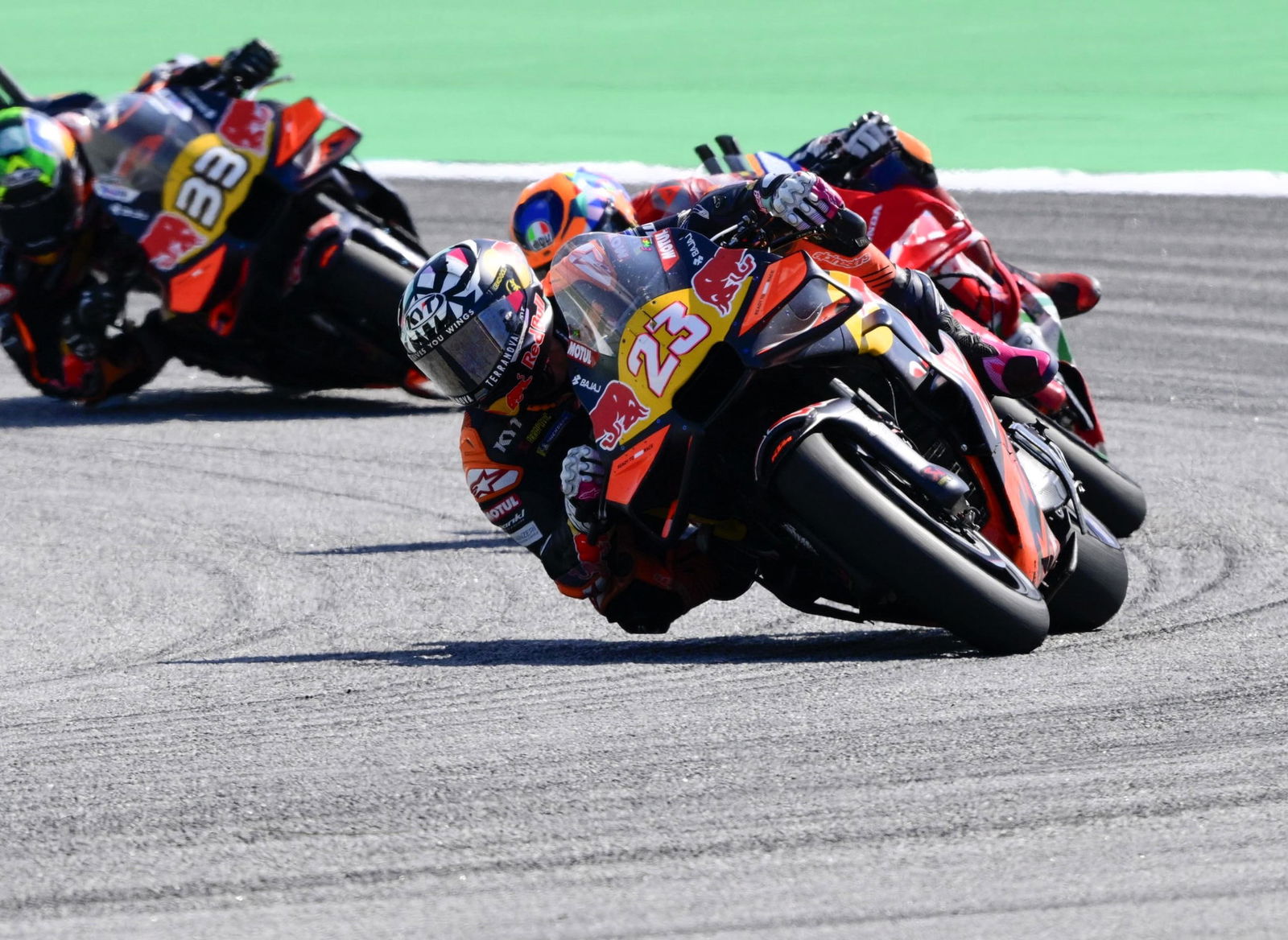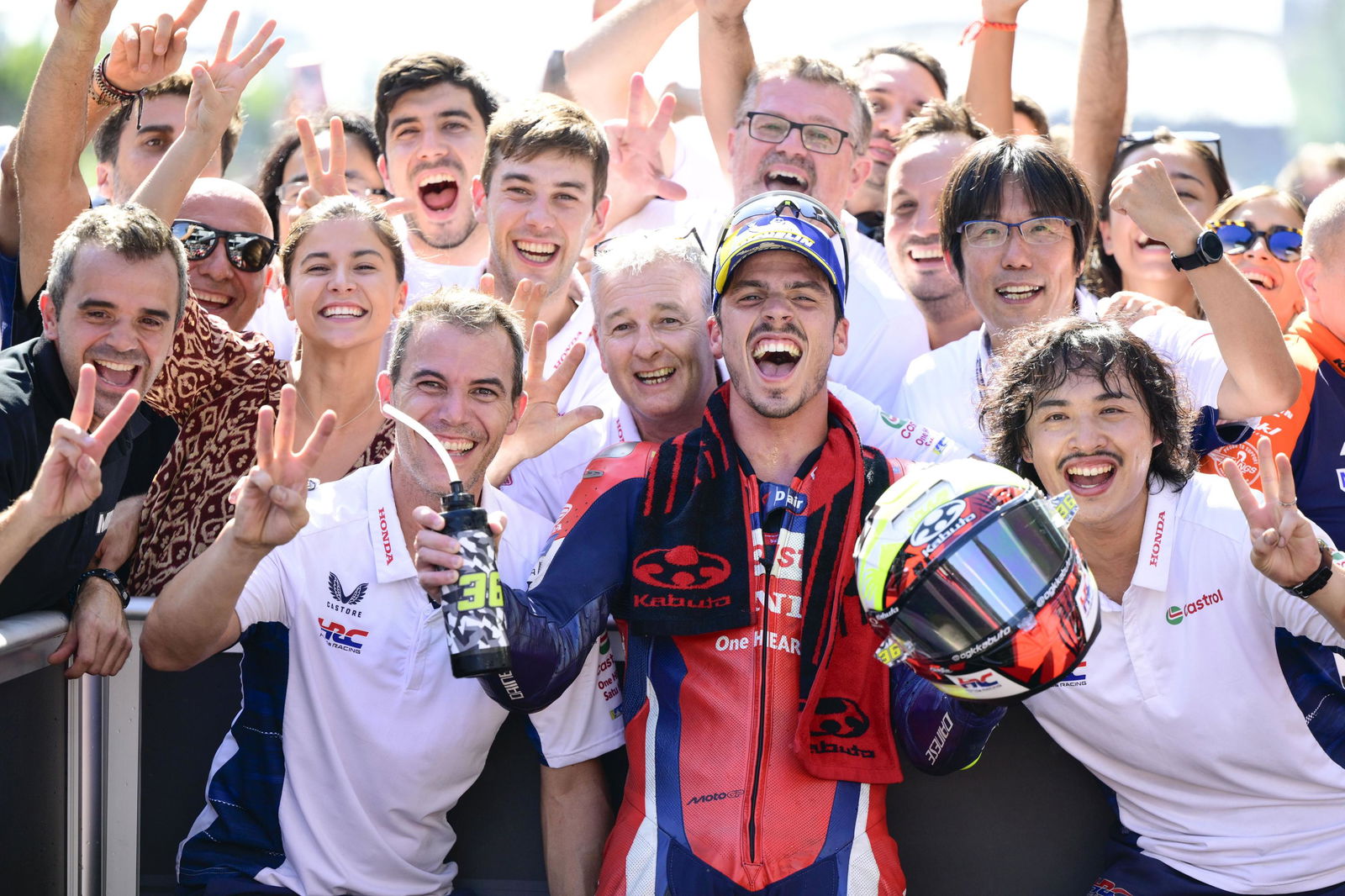The lessons that must be learned from the horrible Sepang Moto3 crash
The horrifying incident between Jose Antonio Rueda and Noah Dettwiler was a shuddering reminder of the dangers of motorcycle racing. But, while this crash may have been an unfortunate incident, it must prompt action from MotoGP to avoid a similar situation from happening again…

This article was originally published on 27 October, one day after the incident between Noah Dettwiler and Jose Antonio Rueda took place. As of 5 November, both riders have undergone surgery on various injuries and are out of danger.
The push to improve safety in motorsport should never relent, no matter how advanced this area has become. That is the pervading thought that comes to mind in the wake of last Sunday’s horrible collision between two riders prior to the Moto3 race at MotoGP’s Malaysian Grand Prix.
At the time of writing, reigning Moto3 world champion Jose Antonio Rueda is recovering in a hospital in Kuala Lumpur, having suffered a suspected fracture to his wrist, bruising and a severe concussion. His Ajo KTM team reported on Sunday evening that he has suffered no serious injuries.
Swiss rider Noah Dettwiller’s condition is critical but stable, following surgery on Monday, according to his CIP team. After receiving treatment trackside, he was airlifted to hospital - as was Rueda - for further examination. His CIP KTM team, in a statement issued on Sunday, labelled him a "true fighter".
While there have been conflicting reports of the nature of his injuries, nothing official has been communicated by MotoGP to the press.
This incident was unusual, as it occurred on the sighting lap to the grid well before the race was due to get underway. Video footage broadcast on the world feed provided by Dorna Sports showed Rueda crashing into the back of a slow Dettwiler on the straight between Turn 3 and Turn 4 at Sepang.
The violence of the incident is truly haunting, not least when considering this happened to a 19 and a 20-year-old. Double MotoGP world champion Pecco Bagnaia was left angry at the fact the organisers elected to run the Moto3 in the wake of this.
“It was very difficult to concentrate,” he said on Sunday. “I may be weak, but I'll never understand why they let the Moto3 riders race after seeing what had just happened to two of their colleagues. It's not ideal, that's for sure. Luckily, I'm not in the position of someone who has to make these decisions. In many situations, the riders have a sensitivity that those who manage the championship surely don't have.”
It brought to mind the terrible crash for 250cc racer Reinhold Roth at the 1990 Yugoslavian Grand Prix. He collided with a slow backmarker at full speed and suffered life-changing injuries as a result. It’s an incident, to this day, that is regularly shown around the world in rider safety briefings.
And it’s a key reason why the FIM stewards look so unfavourably upon riders who are caught riding on the racing line too slowly. Moto3 has traditionally had a problem with this in qualifying sessions, leading to harsher penalties being imposed. During qualifying for the Moto3 class at Sepang, Brian Uriarte was hit with a nine-place grid drop for riding slowly on the racing line after setting his best lap. That was his first offence.
Marshalling standards and systems have improved dramatically since then, but last Sunday’s Moto3 incident was a reminder that there are still avoidance measures that can be implemented in the pursuit of safety.
The incident between Rueda and Dettwiler itself will require investigation, with the true cause of it unknown. There are unconfirmed reports that Detwiller’s KTM had suffered a technical problem, which resulted in his much slower speed to those around him. Onboard footage from Rueda’s bike captures MT Helmets rider Angel Piqueras signalling with his left hand in an apparent warning to riders behind about the slow Dettwiler.
Rueda’s onboard is clear in showing Detwiller running slowly and sitting up. But Rueda is, for some reason, unable to react promptly. If Dettwiler did have a technical issue, none of the footage released shows him attempting to signal as such.
Neither Rueda, nor either the Ajo or CIP teams, have given any official version of events. That will come in time. What is apparent, however, is that it was an unfortunate set of circumstances that led to this incident.
But it was avoidable, and MotoGP must now react.
Sighting laps can be made safer with small tweaks
Sighting laps are not moments of competition, but a live race track in any capacity is still a danger. During the San Marino Grand Prix weekend, MotoGP rider Jack Miller was handed a fine after riding the wrong way on the circuit in a bid to generously offer his race gloves to some fans during the cooldown lap.
It was a moment of kindness (albeit reckless) that cost him €2000, after the FIM stewards deemed he’d broken article 1.21.22 of the MotoGP rule book: “Riders must not ride their motorcycles in the opposite direction of the circuit, either on the track or in the pitlane, unless doing so under the direction of an official.”
The cooldown lap rarely sees riders going at any major speeds. But, sensibly, track safety rules still apply. In years past, MotoGP has moved to make non-competitive track moments safer. After numerous incidents at the ends of sessions when riders are carrying out practice starts, dedicated zones were put in place to reduce risk.
Sighting laps shouldn’t pose any risks, but this year’s Malaysian Grand Prix was a stark reminder that the possibility is never zero percent. While grids in Moto3 have shrunk in recent seasons in response to several fatal accidents at Moto3/Supersport 300 level in 2021, there were still 26 bikes on track when the Rueda/Dettwiler accident happened.
A simple way to avoid this in future would be speed-controlled sighting laps. This could be done with the aid of the BMW safety car, which could lead the field around the lap to ensure no fluctuations in speed from the bikes around. A simple lap time delta could be implemented, with any breach resulting in a severe penalty, such as a pitlane start. Or, perhaps riders could be let off in grid order in groups of three, separated by a certain amount of time to allow space to be made and the sighting lap to be completed safely.

Purists will argue that racing is dangerous and riders should be able to think for themselves. But protecting racers should always be a priority, regardless of how unlike it was ‘back in the day’ it may seem to a few sticks in the mud.
One argument that has arisen in the wake of this incident centres around warm-up sessions. In 2023, MotoGP removed the 10-minute warm-up sessions for the Moto2 and Moto3 classes to make way for a premier class rider parade.
While the move was seen at the time as shortchanging fans on Sundays, it also removed a safety element for the lower classes. Though they may provide little television spectacle, warm-up sessions are the first opportunities riders have to check out their motorcycles, which have more than likely been stripped and rebuilt the previous evening after qualifying.
If Dettwiler did encounter a technical issue (and, again, this is unconfirmed), then it came on a bike he last rode 24 hours earlier in qualifying. Of course, there is no guarantee that an issue won’t develop even after a warm-up session, while an out-lap issue could also still happen. But if there had been a warm-up on Sunday, there is a greater possibility that the reported issue would have materialised then, and what happened on the sighting lap would have been avoided. Riders also would have been more wary, as it is a live session.
Motorcycle racing is dangerous at the best of times. But, in some ways, even more so now. The 2025 season is 22 rounds long. Malaysia was round 20 and the fourth in five weeks since the paddock departed Europe and landed in Japan in early October. Since the summer break, there have been two grands prix every three weeks.
The glamorous exterior of motorsport quickly vanishes for the hard-working mechanics at the circuit, putting in miserably long, hard days to keep grand prix machinery in working order. This is not to suggest that any issue Dettwiler may have had was a result of human error. But there is a wider consideration to be had that both humans and machinery grow more fragile the longer they are worked.
The removal of a vital systems check session, which is what warm-up is, in effect, makes it easier for avoidable issues to slip through the cracks.
MotoGP’s crisis communication is not good enough
As well as from a safety perspective, MotoGP must also learn how to deal with these incidents in a better way. Showing an incident on a live broadcast when the conditions of the riders are not known is always ghoulish; it should never be forgotten that just because a rider is reported as conscious at the scene of an incident is not confirmation that they are not in danger.
The broadcaster will argue that it does so to show what has happened for greater clarity. But it always forgets the humanity of a serious situation like this. Once that crash is shown on the live feed, it enters the unrelenting domain of social media. And it is repeated on the screens of the family of those involved.
What is particularly infuriating about this is the lack of official information that is then shared by MotoGP. It took until during the delayed Moto2 race for the championship to share an official update on Rueda - doing so in a tweet that was quickly buried by live text commentary of the Moto2.
There was no official comment from the championship on Dettwiler. That came hours later from the team. Meanwhile, one publication was reporting information claimed to be from Dettwiler’s father, while MotoGP medical officer Dr. Angel Charte was providing updates to some television broadcasters, which were then being spread around along with other conflicting fragments of information.
This left a number of MotoGP riders unhappy, too, as they had no information on what was going on before having to go out and race themselves.
Containing information in a digital age is a difficult task. But MotoGP must do better to unify its messages and ensure that, in serious situations, it is in full control of any fresh update.


.jpg)